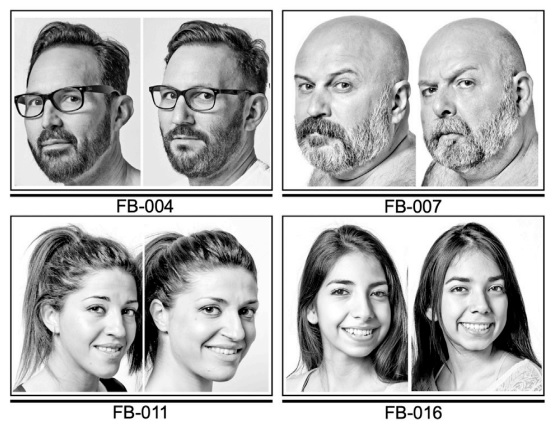Biological explanation discovered of why we all have a “look-alike” person
Biological explanation discovered of why we all have a “look-alike” person
Researchers from the Department of Information and Communication Technologies and the Department of Medicine and Life Sciences are involved in research that has found that extremely similar but unrelated people share genetic characteristics in the genes responsible for the formation of facial features.

There is a saying that we all have a double. For decades, the existence of individuals who resemble each other without any family ties has been described as a proven fact, but anecdotal and without any scientific justification. However, the appearance of the Internet and social networks has led to the sharing of millions of personal photographs around the world and has brought to light that the existence of "copies" among human faces is more frequent than we previously believed.
Today, an article published in the journal Cell Reports, led by Manel Esteller, director of the Josep Carreras Leukemia Research Institute, and with the participation of Xavier Binefa and Federico M. Sukno, from the Department of Information and Communication Technologies (DTIC), and Arcadi Navarro, from the Department of Medicine and Life Sciences (MELIS) of the UPF, demonstrates for the first time what causes us to find identical individuals in different parts of the world.
“The appearance of “look-alikes” of a person, as if they were photocopies, has been a matter of attention in the arts and popular culture, but it has never been approached from a scientific point of view”, Dr. Esteller explains, and he adds: “What we have done is to collect the same biological material from these extremely similar individuals (also called “dobles” in Spanish or “Doppelgänger” in German) to see if we could find an objective reason for their similarity”.
As explained in the article of the journal Cell Reports, people with reasonable resemblances were subjected to facial recognition programs that allowed to discover pairs of individuals that were almost indistinguishable from each other. Then, researchers analyzed their DNA sequence (genome), their epigenetic profile (genome regulation mechanisms) and their composition of microbes (microbiome).
The results showed that human doubles share similar variations of their DNA, particularly in relation to those genes involved in the formation of the mouth, nose, eyes, chin and forehead. Given that the human population is now 7.9 billion, and we are much more interconnected, these repetitions are increasingly likely to occur. Researchers could also see that those similarities are not only limited to facial features: “It was also curious to verify that the resemblance of these pairs of doubles was not only limited to facial features but it also affected other physical properties (height and weight), and it is even extended to certain traits of their behavior”, Esteller explains.
Esteller is confident that this study can open new research lines in the future in different areas, and he highlights, on the one hand, that “it provides the basis for diagnosing genetic diseases from the analysis of the image and shape of the face” and on the other hand, “it allows, from an unknown DNA sample, to reconstruct the face of the person to whom that genetic material belongs, one of the great desires of forensic medicine”, concludes the researcher.
Article:
Joshi RS, Rigau M, García-Prieto CA, Castro de Moura M, Piñeyro D, Moran S, Davalos V, Carrión P, Ferrando-Bernal M, Olalde I, Lalueza-Fox C, Navarro A, Fernández-Tena C, Aspandi D, Sukno FM, Binefa X, Valencia A, Esteller M. Look-alike humans identified by facial recognition algorithms show genetic similarities. Cell Reports, doi.org/10.1016/j.celrep.2022.111257, 2022.
